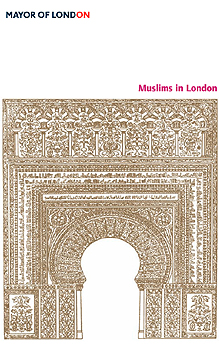
Publisher: Greater London Authority
Release Date: October 2006
Source: No longer available on the website
This is a ground-breaking report and the first produced by a European city on its Muslim population. The report brings together in a single, easy-to-refer volume information from a variety of sources. It also identifies the needs of the community and provides a number of policy suggestions. It points out gaps in the literature and is thus a good starting point for new lines of inquiry and research.
The report is structured around six themes: demographics, socio-economic profiles, Muslims in public life – with reference to political participation, voluntary sector engagement and cultural life, the criminal justice system and Islamophobia. It contains a rich set of maps and intriguing glimpses of the capital city’s first interaction with Muslims in the Elizabethan period.
The report should stimulate large employers to ensure – where appropriate – that their staffing and recruitment policies reflect the local population. The report indicates that in ten of London’s 33 boroughs over 10% of the population is Muslim. There is no reason why this proportion should not be reflected in local government and in departments such as social services where it is so important for staff to understand Muslim ways of living and norms.
It draws largely on the 2001 Census statistics but includes data from university reports, the Open Society Institute and Government departments. It will serve as a useful snapshot of Muslims in London though there are a number of more recent reports that provide more detail on some specialist topics (e.g. the Equal Opportunities Commission’s interim report, ‘Moving on up? Bangladeshi, Pakistani and Black Caribbean women and work’, October 2005; the TUC Report ‘Poverty, Exclusion and British people of Pakistani and Bangladeshi Origin’, February 2006). However these serve to confirm the information provided in ‘Muslims in London’.
Mayor Livingstone in the foreword to the report writes that: “Muslim communities in all their diversity play an essential part in the life of our city”. The report also notes that “Muslims in London were keen backers of the bid for the 2012 Olympic Games…four of the London boroughs most closely involved with the 2012 Games – Tower Hamlets, Newham, Waltham Forest and Hackney had a combined Muslim population of almost 191,500 people at the time of the 2001 Census…by 2012 the Muslim population will be over 250,000. There are tremendous opportunities for local communities to become stakeholders in the Olympics…”. At the press conference launching the report the Mayor said that the 2012 Games would coincide with Ramadan. It was thus important that restaurants and similar facilities do not close down before the breaking of the fast. Consultations are underway to ensure the needs of spectators, volunteers and athletes for prayer facilities are taken into account.
M. A. Sherif, 2006
